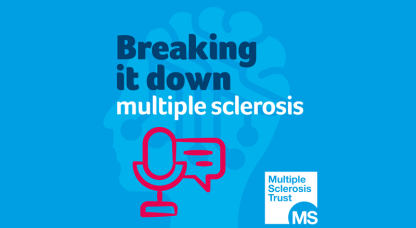Spasticity is where the muscles feel stiff, heavy and difficult to move and it can be a symptom of MS. Plantarflexor (PF) spasticity affects the muscles around the ankle that move the foot downwards away from the leg, such as when someone stands on tip toes. This study aimed to investigate if spasticity in these muscles affected walking in people with MS.
42 people with MS took part in the study. Spasticity in their ankle muscles was measured by a person and a computer. Their walking speed, endurance and self-perceived walking ability and limitations were also assessed.
The study found that mild spasticity around the ankle does not appear to affect walking performance. The authors conclude that this is probably due to the mild level of spasticity measured in these participants as previous research has shown that as spasticity becomes more severe people with MS report more trouble walking.
Spasticity is where the muscles feel stiff, heavy and difficult to move and it can be a symptom of MS. When the lower limbs are affected by spasticity it can mean movement and walking can become more difficult.
Plantarflexor spasticity affects the muscles around the ankle that move the foot downwards away from the leg, such as when someone stands on tip toes. This study aimed to investigate if spasticity in these muscles affected walking in people with MS.
42 people with MS took part in the study. They all had a mild to moderate disability as measured by the EDSS, scores on this ranged from 0 to 6, with an average of 3. All participants were able to walk, 12 of them normally used a walking stick to assist their walking.
Walking speed and endurance and self-perceived walking ability and limitations were assessed using the timed 25-foot walk test, the 6-minute walk test and the 12-item MS walking scale.
Plantarflexor (PF) spasticity around the ankle was assessed using the Modified Ashworth Scale (MAS) which tests levels of spasticity by measuring muscle resistance to stretches. PF spasticity was also measured using a dynamometer, this is a device where the participant sits in a chair with their leg and foot in the measurement device, and a computer automatically takes measurements of movement and spasms from the muscles.
The study found that 29 of the participants had PF spasticity. When the researchers looked at the results of the walking tests they found that the PF spasticity did not have an effect on walking performance.
This study shows that mild spasticity around the ankle does not appear to affect walking. The authors conclude that this is probably due to the mild level of spasticity measured in these participants as previous research has shown that as spasticity becomes more severe, people with MS report more trouble walking. The researchers do also point out a limitation of their study is that as they only measured spasticity around the ankle, it did not take into account problems with muscles further up the leg that can contribute to walking problems such as sensory problems, weakness and spasms.
Spasticity is a symptom of multiple sclerosis where the muscles feel stiff, heavy and difficult to move as muscle tone becomes greatly increased. Muscle tone refers to the level of tension or resistance to movement in a muscle which allows people to move limbs or hold a position. If spasticity is very severe it can be very difficult to bend a limb at all.
People with MS may also experience spasms which are sudden involuntary contractions of muscles. Individual spasm attacks tend to come on suddenly and last for a short period of time.
Both spasticity and spasms can be a direct result of nerve damage in MS but can also be triggered by other factors such as bladder problems, constipation or infections. Management and treatment of spasticity and spasms will involve identifying any triggering factors and treating these triggers which can reduce the impact. Treatment of spasticity and spasms can also involve several medications such as baclofen or gabapentin and involvement of health professionals such as physiotherapists who can help with stretching exercises and provide advice on posture, positioning and walking difficulties.
You can read more about spasticity and spasms in the A to Z of MS.


